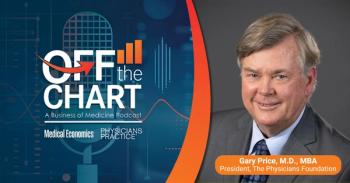
Practicing compassion
I came across an unusual phrase the other day: “compassion fatigue.
I came across an unusual phrase the other day: “compassion fatigue.” It started me thinking, “Just what role does compassion play in today’s medical practice and the doctor-patient relationship?” Of course physicians should be compassionate. That’s a given. But what are the realities when you see 45 patients a day, without lunch?
Practices are certainly experiencing more stress in their day-to-day operations. Most medical practices are facing increasing financial pressures as well, with the resultant need to squeeze in just one more patient each day. Tempers can grow shorter and satisfaction seems more fleeting.
Perhaps you have been unsympathetic as of late, too busy to stop and offer solace to your patients? If you find yourself fighting a vague sense of anxiety, depression, or low self-esteem, you might be experiencing compassion fatigue.
One way to fight off this attitude is to involve your whole practice. Have you talked to your staff about wanting to be identified as a compassionate practice? Start off by defining compassion and how it might apply to your practice. Your mission statement probably includes goals such as “high quality of care” and “center of excellence.” Is this enough? Do you take a compassionate approach to each of your patients daily?
An oncology practice that I worked with several years ago actually had a phrase they used that was part of their mission statement, “Comprehensive and Compassionate Care” - the three C’s model. They wanted to care for the whole patient: the individual, her family, her home life, and even her financial situation.
But sometimes it’s hard to be compassionate in the face of rudeness or aggressive behavior. Let’s face it, some patients are just difficult. And stressful situations will only increase their unpleasantness.
One method to help your staff deal professionally with these types of patients is role playing. Have your staff identify different types of patient personalities: the excuse maker, the amateur physician, the over-scheduled professional, etc. List them (by identifying traits) on a survey form or the white board in your break room and ask employees how they would approach a conflict with each of these hypothetical patients. You can even appoint a “staffer” and a “patient” to act out an exchange. Is there consistency in your staff’s responses? Brainstorm different strategies for dealing with difficult patients and create a protocol that everyone in the practice follows. Make sure that you or your office manager is available for additional support if your staff needs it.
Remember, to be compassionate with your patients it is first necessary to take a look at yourself. If you are suffering from compassion fatigue, ask yourself what you can do to seek balance in your work environment. Once you honestly assess yourself, you can then take a look at your employees and fellow physicians. Make it a team effort and build compassion into your practice’s mission. You’ll be glad you did: Treating your patients with compassion and providing quality of care will lead to a happier, more efficient, and more successful practice.
Owen Dahl, FACHE, CHBC, is a nationally recognized medical practice management consultant with over 26 years of experience in consulting for and managing medical practices and author of “Think Business! Medical Practice Quality, Efficiency, Profits” and “The Medical Practice Disaster Planning Workbook.” He can be reached at
Newsletter
Optimize your practice with the Physicians Practice newsletter, offering management pearls, leadership tips, and business strategies tailored for practice administrators and physicians of any specialty.













